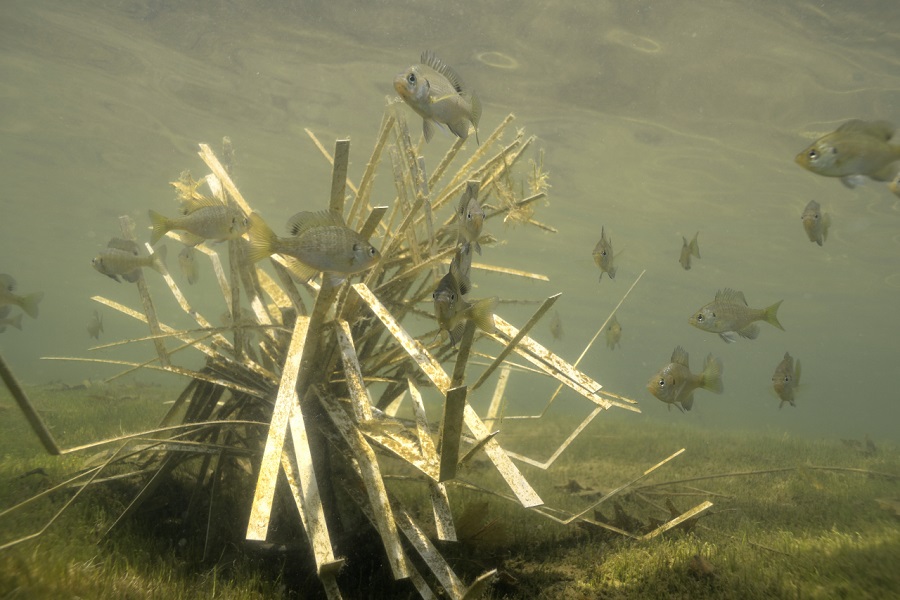
This fall, the Arizona Game and Fish Department plans to use a crane on a 36-foot pontoon boat to sink fish habitat -- critical to anglers' fishing opportunities -- into lakes along the Salt River chain in central Arizona.
For anglers, this ongoing project will result in better fishing for generations to come.
Roosevelt Lake is planned to be the first to receive habitat. These artificial structures and concrete reef balls attract bait fish, which then attract predatory fish for sport-fishing anglers to target. Habitat is important for fish spawning, recruitment, growth, health and populations.
The Fish Habitat Restoration Program requires numerous steps to get to the point of being able to put fish habitat in the lakes. In May, the Tonto National Forest (TNF) got the Department one step closer to putting fish habitat in central Arizona's busiest and most popular fishing lakes and increasing catchability of largemouth bass, smallmouth bass, crappie, and catfish.
The TNF issued a Decision Memo that "Categorically Excluded" the proposed Department project activities from further National Environmental Policy Act analysis in an environmental assessment or environmental impact statement. The Decision Memo also provided a "no effect" determination for the Endangered Species Act, and stated no effects to cultural or archaeological sites below the lake under the National Historic Preservation Act.
Fishing is one of Arizona's most popular outdoor activities. Providing good places for anglers to fish is one of AZGFD's primary goals. Five of the biggest and most popular lakes to fish are located in central Arizona and are managed by Salt River Project for the Valley's water supply: Roosevelt Lake, Apache Lake, Canyon Lake, Saguaro Lake, and Bartlett Lake.
In 2014 the Department embarked on a program to improve fisheries habitat in the reservoirs of central Arizona and restore the fisheries to their former glory days. Most of these lakes are more than 70 years old, and Roosevelt Lake is more than 100 years old. Over time, reservoirs lose quality fish habitat, particularly where water levels fluctuate wildly, such as at Roosevelt. The fish habitat project is a cooperative effort between many angler groups and agencies.
The reservoirs of central Arizona lack sufficient hiding and ambush cover and habitat for growth and survival of young fish. Some of these reservoirs have also experienced a decline in the fishery as measured through periodic fish surveys.
In fact, one of the largest and most successful projects in the nation, the Lake Havasu Fishery Improvement Program, has been ongoing since 1993 in Lake Havasu and is credited with improving both native and sport fish habitat in that Colorado River reservoir.
The Tonto National Forest is the land management agency for five of the biggest and busiest fishing lakes in central Arizona. In 2013, the economic value to the state of Arizona associated with these lakes was estimated to be more than $318 million.
One part of the process is ongoing: getting agreement from the relevant management agencies with an interest in the operation of the lakes, such as the U.S. Bureau of Reclamation (built the dams), Salt River Project (operates the dams), and Tonto National Forest (manages the areas around the lakes).


 Advertising
Advertising